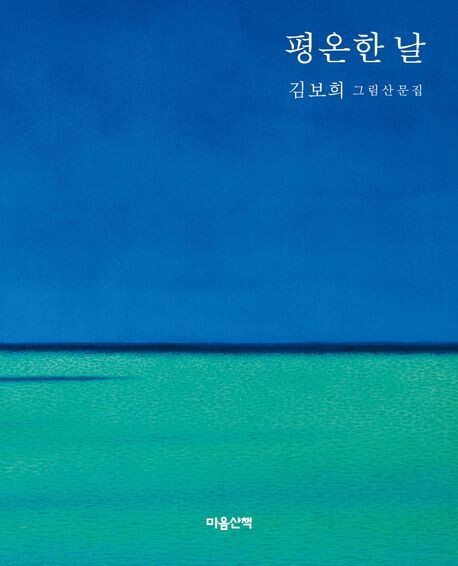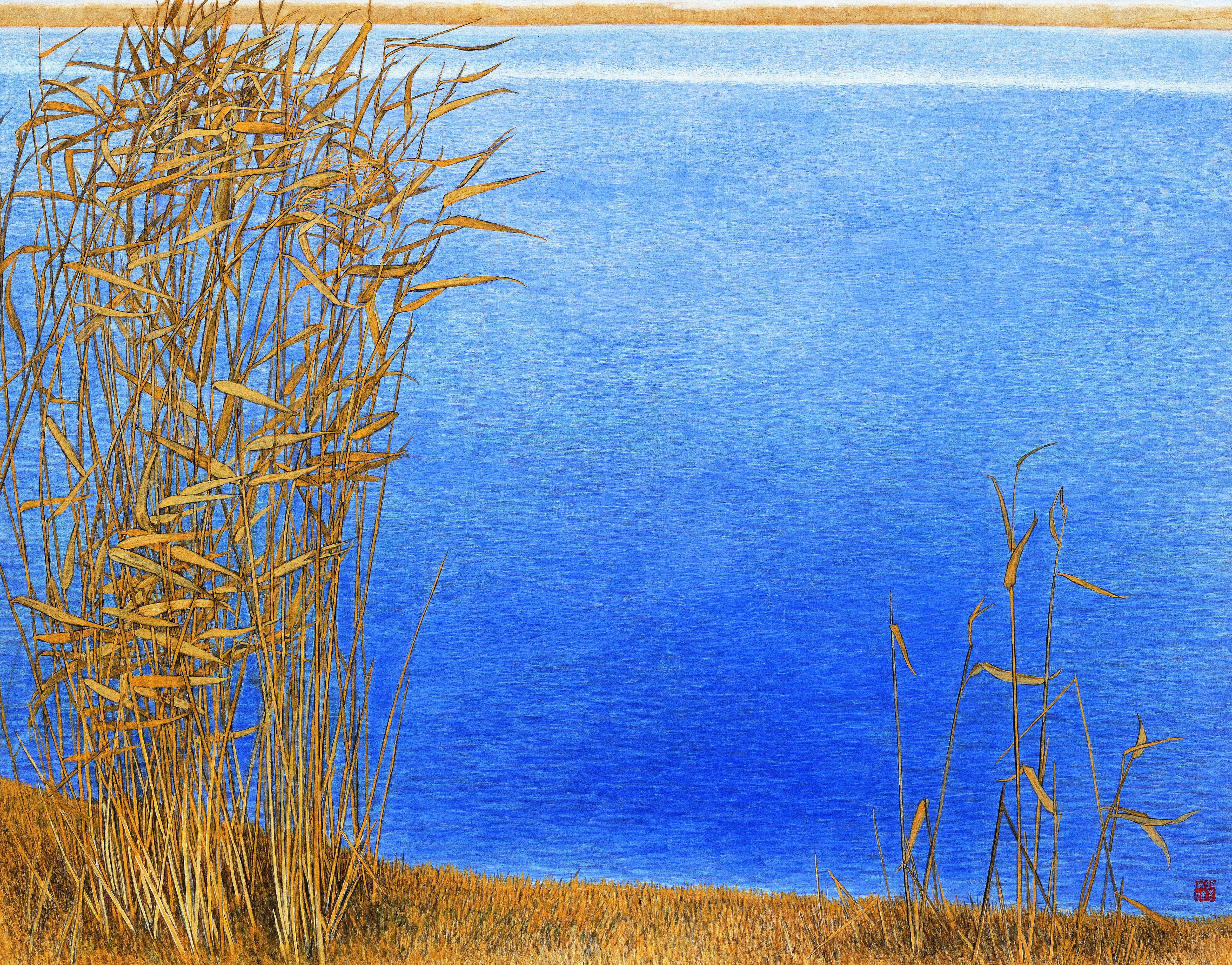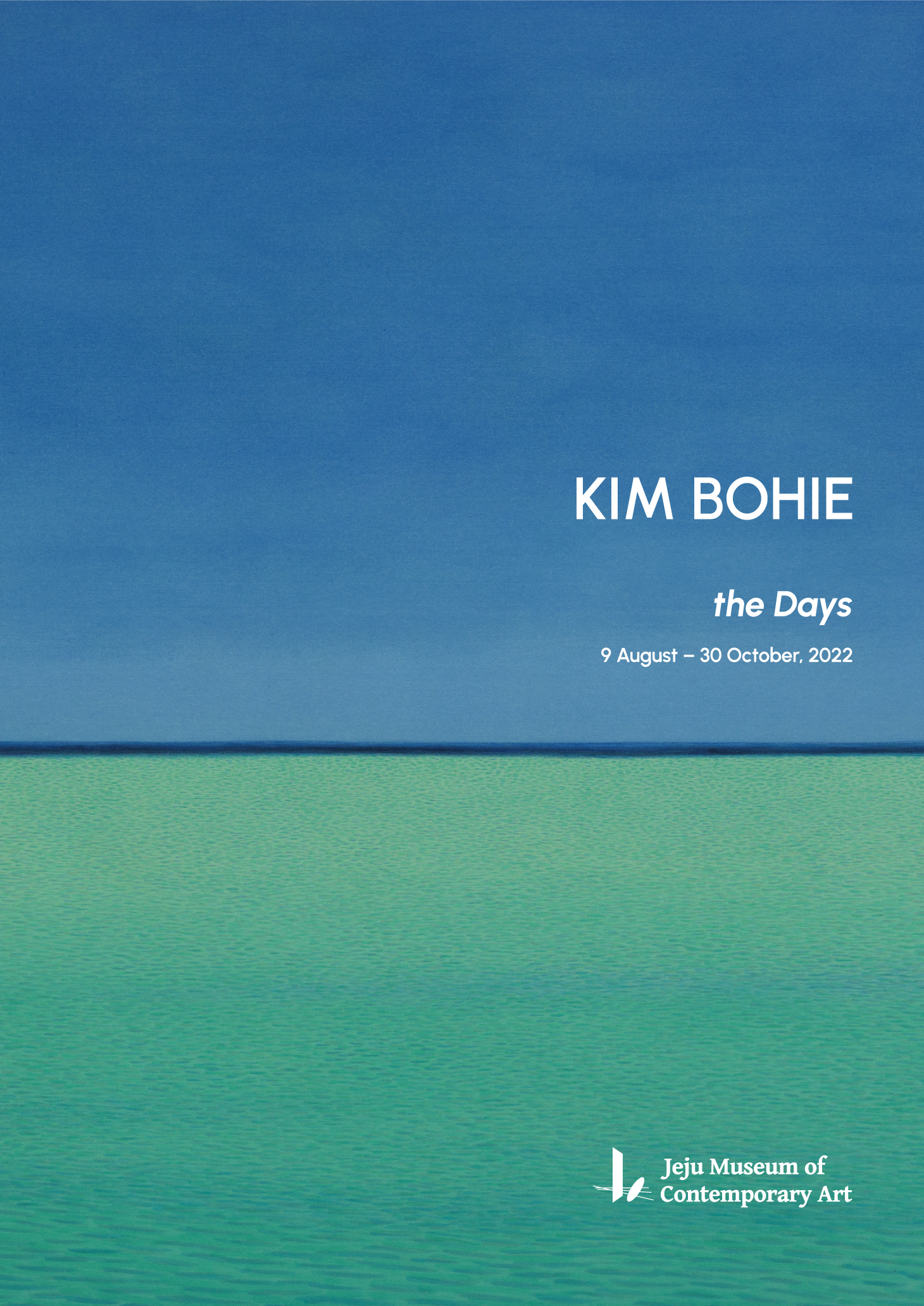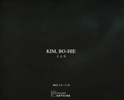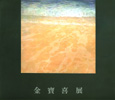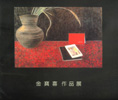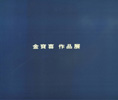2000.09.27 ~ 10.12 아트스페이스 서울 오광수 <명상의 풍경-김보희의 근작>
명상의 풍경-김보희의 근작 - 오광수
95년 2회 월전미술상 수상기념전을 가진 이후 3번째 갖게 되는 김보희 개인전은 그의 지속적인 제작태도와 새로운 관심의 추이를 점검케 하는 기회가 될 것 같다. 80년대까지만 하더라도 그의 화면엔 인물, 정물, 풍경 등 비교적 다양한 소재들이 다루어졌다. 그러나 90년대로 오면서 소재는 자연에로 압축되어지면서 구성과 표현의 함축미를 보여주기 시작했다.
자연은 오랫동안 동양의 중심적 화목으로 인식되어왔다. 김보희의 화면에 등장하는 자연도 근원적으론 동양의 자연관과 깊은 유대를 이루고 있음은 말한 나위도 없다. 어떻게 보면 그의 화면은 일상에서 출발하여 점점 커다란 자연의 품으로 회귀해온 역정을 들어내놓고 있는 듯 보인다. 이는 자잘한 일상과 자기주변에서 벗어나 세계를 바라보는 인식의 틀이 그만큼 확대되었음을 반영하는 것이기도 하다. 원숙해질수록 자연으로 돌아가는 옛 동양인의 인생관과 무관하지 않다. 일상과 생활주변도 자연임에 틀림없으나 가능한 한 인위적인 것이 배제된 것이야말로 순수한 의미의 자연이랄 수 있다. 한편 자연으로의 회귀란 대상을 상대적으로 바라보려는 서구적 인식에서 벗어나 자연과 일체화된다는 동양적 자연사상의 반영이기도 하다.
90년대 이래 그의 자연에 임하는 기본적 태도는 꾸준하면서도 점진적인 모색을 전개하고 있는 편이다. 자연을 거시적인 시각으로 포착한다든지 대범하게 어느 단면으로 압축해서 접근한다든지 하는 방법은 90년대 초나 근작이 거의 일치한다. 설명이 줄어들고 담담하게 자연을 들어내려는 태도는 그 나름의 심미적 탐구의 깊이를 반영하는 것이다.
그가 선택하고 있는 풍경은 어떤 특별한 변화를 지닌 것이 아니다. 어떻게 보면 너무 평범한, 그래서 도무지 화제가 될 것 같지 않은 것들이다. 우리가 흔히 지나칠 수 있는 그런 풍경의 단면들이다. 갈대 숲 만이 화면 가득히 들어차는 풍경이라든지, 이름 모를 야생화가 질펀하게 피어있는 들녘이라든지, 검은 덩어리로만 나타나는 섬과 섬을 에워싸고 있는 강의 잔잔한 수면이라든지 무엇 하나 특별한 시각적 긴장을 유도하는 것이라곤 없다. 그러면서도 이들 풍경으로서의 우리의 명상을 유도해주기 때문일 것이다.
그의 화면 앞에 서면 끝없는 고요 속에 함몰되어 자신도 모르게 현실이 아닌 또 하나의 세계로 이끌려감을 깨닫게 된다. 거기 풍경만 있는 것이 아니라 자연이 품어내는 기운과 소리가 있음을 깨닫게 된다. 숲 속에서 일어나는 바람소리, 바위를 할퀴며 쓸어지는 파도소리 같은 웅장한 소리 아니고도 땅 속에서 들리는 미세한 곤충들의 울음소리나 식물들이 자라는 소리나 땅의 기운이 내뿜는 잔잔하면서도 끈질긴 맥박이 화면에 미만된다.
자연을 향한 작가의 태도가 꾸준한 한편으로 방법에 있어 점진적 변모를 엿보게 하는 것이 근작의 특징이다. 그것은 채색이 배제되고 순수한 수묵만으로 작품을 완성하고 있음이다. 80년대의 진하고 화사했던 색채는 점차로 몽롱한 채감으로 전이되어오다가 근작에 와선 극히 부분적으로 설채가 될 뿐 거의 수묵기조로 바뀌고 있다. 채색이 가해졌던 풍경들이 생생한 만큼 현장감이 강했으나 수묵위주의 풍경은 구체적인 현실의 풍경이면서 현실감을 부단히 제거하는 특징이 있다. 말하자면 현실이면서 현실이 아닌 세계로의 진입이란 새로운 사실을 환기해준다. 이는 밖으로 향했던 그의 눈이 안으로 방향을 바꾸고 있음을 나타내는 중좌라 할 수 있다. 즉 밖을 통해 안을 들여다보는 것으로서 말이다. 자연을 통해 자신의 내면의 풍경을 가꾸는 이 변화야말로 자기성숙의 또 하나 반영이 아닌가 생각된다.
채색을 중심으로 다루었던 작가가 수묵을 기조로 한 새로운 시도를 전개했다는 것은 실로 놀라운 변화가 아닐 수 없다. 사실 그럼에도 변화가 변화로 읽히기보다는 자기세계에 대한 부단한 검증으로 보여 그의 명상의 풍경도 한결 무르익어감을 확인할 뿐이다.
Landscape of Meditation - Exhibition of Kim Bo-hie's Latest Works_Oh, Kwang-Su
Kim Bo-hie is having a solo exhibition. This is her third exhibition following her 1995 exhibition to celebrate her winning the Second Woljeon Art Prize. This exhibition is expected to provide a window on the latest development in the artist's painting style and passion. As recently as 1980s, Kim experimented with various genres including figures, still-life, and landscape on her canvases. In the 1990s, however, she has begun to take up nature as her favorite subject matter, giving it added depth and meaning with her composition and style.
Nature has long been deemed as the supreme subject of traditional oriental painting. Naturally, the nature depicted in Kim Bo-hie's works is deeply rooted in the oriental view of nature. In some sense, the artist's nature-oriented attitude seems to reflect her gradual spiritual journey from depiction of the mundane world of her surroundings to return to nature. Conversely, her world of perception expands from her immediate surroundings to the big world with her attaining maturity, similar to Asian tradition of returning to nature with age. Though everyday life and mundane world may be viewed as part of nature, in this context, can be translated in the oriental way thinking as becoming one with nature, in contrast to the western way of looking at nature as an object in terms of man's relation to it. In a steady evolution in the artist's approach to nature, Kim has consistently experimented with grasping nature as a whole or capturing nature in a defining stroke throughout 1990s and beyond. Her restrained use of explanation and her way of projection tranquil image of nature reflect the depth of her artistic prowess born of her long aesthetic pursuit in her own way.
The artist does not depict some exceptional sceneries. Rather, she creates a canvasful of open field covered with anonymous wild flowers or placid sea surrounding islands which appear only as distant dots-sceneries so ordinary that most people pass by without even noticing. We see no eye-catching visual tension created, just more sense of comfort and tranquility with each viewing. There probably lies the beauty of her paintings-the thought- provoking sceneries in her paintings lead us to meditate rather than just being attractive objects.
Looking at her recent works, the viewer find themselves drawn to the other world beyond daily human perception before they know it, included by the endless serenity that surround them. Unlike the sound grandeur of the tree-toppling winds and rock-crashing waves, the droning of tiny insects, the sound of grass-growing and seed-sprouting, and all the other soothing but persistent pulse of life emanating from the underground are everywhere on her paintings.
The characteristic feature of Kim Bo-hie's latest landscapes is gradual changes into a near pure ink painting in her expressive style based on her consistent attitude towards nature in terms of subject. The most striking is the artist's transition from a profusion of vibrant colors in the 1980s through increasingly fuzzy sense of colors to an extremely ascetic use of color in favor of different tones of Indian ink. While colorful landscapes evoke vivid sense of reality, ink-based landscapes are characterized by other-worldly impression though they portray the actual sceneries. In this regard, the transformation in her style epitomizes her rise above the world affairs, revealing that her attention which used be directed to the outside world is now turning inward, looking deep inside from the outside world. This shift in her perspective is believed to mirror her attained maturity through using nature to cultivate her mental landscape.
It is a really stunning change that the artist, who started out as a master of colors, launched new experiment into ink-based painting, For all the difference on the surface, her experiment is interpreted not as a change for change's sake but her ceaseless exploration for her artistic world, this exhibition of her meditative landscapes being yet another brilliant example of her more mature artistic effort.
